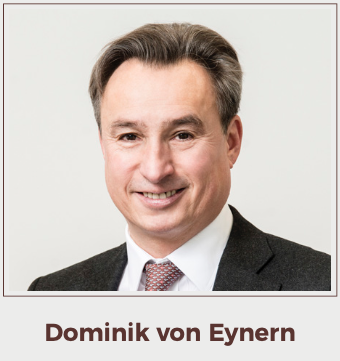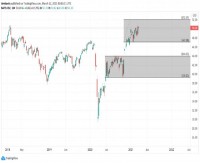|

Dominik v. Eynern comes from a business family which is now in its 5th generation.He holds a BSc in Economics and a MScin Finance, worked in the international investment banking industry. He’s a founding member and director of Family Hippocampus ltd. His research on family dynamics is inspired by insights from behavioural economics, cognitive neuroscience, dynamic complex system, and chaos theory. Why is it that many families struggle to make their governance work in practice? It starts with the way family governance is introduced. Very often, families rely on the idea that once a family charter is created, it ticks a box for multigenerational wealth transition as it regulates and solves all matters family dynamic. From my own experience I know, that documents of this kind are very limited in guiding and regulating social behaviour. Appointing a facilitator and getting the family, including the patriarch, in one room, even for 4 weekends may not be enough. The atmosphere of such a gathering is limited in terms of psychological safety, so not everyone is truly engaged on an emotional level and dares to speak their minds and feelings. The outcome is likely to be a political compromise that people agree on and sign with ink – not heart. Thus, the family charters are likely to contain rules and regulations which no one really owns. The family charter ends up being a beautifully bound book, which is shelved and only consulted as a reference frame, especially when there are major breaches. 
What is the main issue with many family charters? Apart from the importance of the creation process, the content of a family constitution does not come naturally to us humans. Rules and regulationsare mostly processed in the cognitive control network of our brains, which is engaged when we are task-focused. We need to remember detailsand apply them to the current situation which is energy intensive. For evolutionary reasons, we are programmed to conserve energy and our brains are not made for accuracy but for survival. As family members, we don’t tend to live every moment with the content of the Charter in our minds. The lack of mental ownership in combination with the inertia to process the information contained in family charters are the main issues why family charters are not very effective in guiding behaviours. How can you achieve broad consensus in a multi- generational family group? To my mind, it is all about getting the inclusive buy-in from all family members and create a shared reality, irrespective of the generation of family member. This starts with the individual as an important sub-system of the whole social system we call ‘business-family’. At the core lies the social process matrix defined by learnable, social skills: emotional intelligence (i.e. emotional regulation), social intelligence(e.g. empathy, compassion) and to some degree, intellectual intelligence (e.g. understanding what the business is about and how it works and what it entails). With an efficient social process matrix, psychological safety can be created. Members of the social group feel safe to take socio-emotional risks because they do not fear judgements of others and know they are being heard, even if they have different opinions. In a socially safe environment, there is no need for self- protection and that is essential to create a shared reality for generative collaboration – the basis for the creation of family charters. How can family governance be future-proofed? We can future-proof systems in Newton mechanics, where we can rely on deterministic models to forecast outcomes based on clear cause and effect, but social systems are made of non-linear patterns of relationships with nested feed-back-loops and outcomes are neither predictable nor can they be controlled in a way we can control mechanical systems a la Newton. So it is all about ‘evolute or die’. We can conclude that social systems that arerigid, i.e. have no degrees of freedom in termsof integrated diversity and mental wriggle room, are more likely to fail, and those with the optimal amount of freedom degrees are more resilient. The only thing that seems to future-proof a family is effective family governance that enhances system resilience. In a nutshell, what is your top tip for a family looking for a practical and resilient solution to governance? Effective family governance needs to be effortlessly and truly ‘owned’ to be effective, i.e. the information must become embodied cognitions of each family member. Therefore, family governance must address the whole of the human brain – not only one part in form of the cognitive control network. It is time for new approaches to create system resilience because the old ways have limited effects. The genesis of a family charter is essential for mental ownership, but it is not enough! A charter is still is a document with principles, rules and regulations and less freedom degrees. To make family governance effective it needs a family narrative – the first stepto creating a shared reality. Narratives have more freedom degrees but guide our meaning-making processes, our decisions and behaviours from a superposition and have proven to synchronise brain activities of two or more individuals. They are the oldest way of cultural information-transmission,thus we are very susceptible to narratives. Well- constructed narratives evoke emotions and create rich imagery. Narrative are mostly processed inthe default-mode network of our brains, which is active when we relax, reflect and daydream – a low energy activity. Thus, narratives are more likely to be steady companies as we go through life than family charters. I believe, good family governance is a continuous, iterative process and should start with creating a family narrative, which is rewarding to co-create and read, remember and to pass on. Family charters should be firmly embedded in the family narrative. The nested family-governance process continues by creating specific, internal institutions like family councils, based on the rules and regulations laid out in the family charter. This is what makes family governance work! 
I get what you’re saying about family narratives. Indeed, stories are central to our world. We form our families, our communities, and our nations through stories. I think what you are suggesting is to consciously harness, i.e. purposely write and use a family narrative. Even if there is no consciously formed family narrative, there is already one or more in the family by what the older generations are telling their children about themselves and the elders of the clan, and their lives. Interestingly, I am exactly at the point to discover, develop and share my own family narrative with my young children. I have a few more questions for you: Should such a family narrative be entirely orally transmitted, or should it be written down? Should an effort be made to collect and preserve important heirlooms? Narratives are a great way to connect generations and close the generational gap because they are conducive to creating a shared reality and for attractors to emerge, i.e., a point where the whole family becomes aware that there is something everyone can relate to and this ‘something’ is greater than the individual ego. The first stage of narrative creation is the establishment of a narrative fragment inventory [NFI] by involving all family members from all generations in vivo in combination with desk research. Extracting narrative fragments from family members should be done by a psychologically trained professional, since some narrative fragments may be consciously or subconsciously supressed, others may be presented and with emotional load, which is additional information. The interpretation of the samenarrative fragment of 2 different people may be rather different which allows conclusions about the person’s subjective mental model of the world. The second stage is a group coaching exercise to co-create a rough outline of the narrative, which will require mediation skills of the facilitator because the task at hand is to create a shared reality – a version of the family narrative everyone agrees on. To make it a flowing, readable and relatable document, a gifted author should turn the draft from the second stage into a coherent story, filling in the gaps which occur naturally in particular in old families. S/he should dramatize the story and pad out the peaks and troughs of the family history in a way that it elicits b emotional reactions in the reader. It goes without saying that the finalised family narrative is not for publishing! After the family narrative is ratified by all family members it is pivotal that the family meets periodically and discusses the most important elements of the family narrative and interprets and re-interprets the content with an open mind, as some interpretations may change over time with an ever evolving social context. Additionally, more narrative fragments are being created e.g.: the next generation creates businesses that become unicorns etc. which needs to be reflected in the narrative. This work is very important because narratives create attractors and build a frame of reference for perceived information and interpretation on which we base our actions on. But, as you also referenced to, attractors / reference frames can be outdated and are therefore dysfunctional. Thus, it is key to keep an open mindset for an ever evolving world. | ||||
|
Horizons: Family Office & Investor Magazine
From Charter to Narratives: Making Family Governance and Legacies Work |
|





 RSS
RSS








